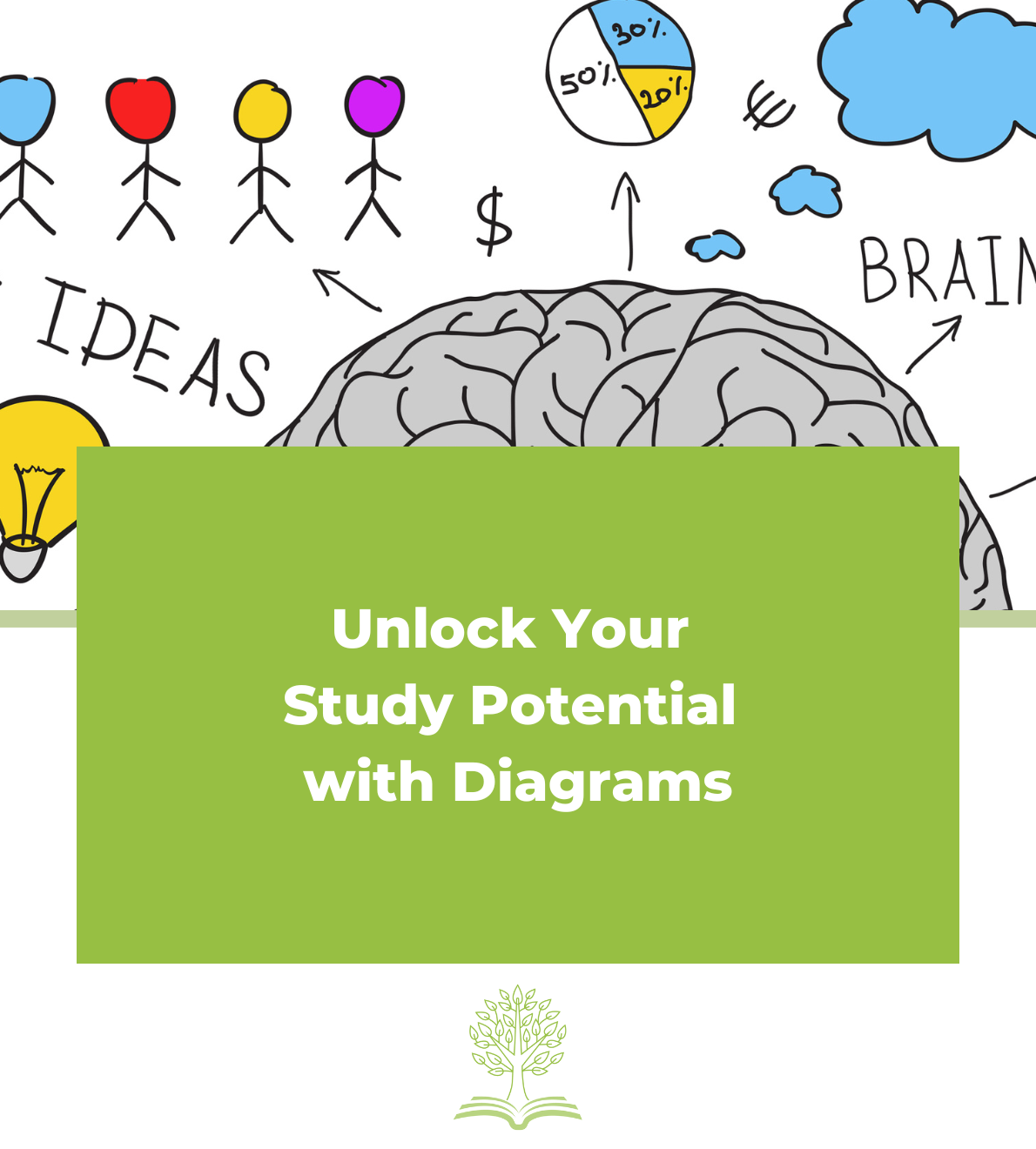Unlock Your Study Potential with Diagrams
Studying can feel overwhelming, especially when faced with a mountain of information to remember. But what if there’s a simple tool that can help you understand and retain all that information better? Introducing the power of diagrams. A diagram is a visual representation of information that helps you see connections, relationships, and patterns that might be harder to grasp in text form.
The Power of Visual Learning
Visual aids like diagrams can transform complex information into easily understandable and memorable formats. They engage your brain in a different way compared to text, helping you to better understand and recall the material.
How Diagrams Enhance Learning
- Visual Clarity: Diagrams provide a clear and concise way to visualize complex information.
- Active Engagement: Creating diagrams involves active learning, which helps reinforce the material.
- Better Retention: Visual learning aids can improve long-term memory and make information more accessible.
Practical Applications of Diagrams in Studying
Understanding Complex Processes
Imagine you’re studying for a biology exam and struggling with the concept of photosynthesis. Reading through your notes multiple times may not help the information stick. Now, imagine drawing a diagram of the photosynthesis process. By mapping out each step, you can see how different parts of the process fit together. This visual representation helps you actively engage with the information and organize it in a way that makes sense to you.
Enhancing Note-Taking
Diagrams aren’t just useful for studying; they can also enhance your note-taking in class. Instead of simply copying down what your teacher says, try creating diagrams that represent the information. This will help you remember the material better and make connections between different concepts.
Types of Diagrams to Use
There are a variety of diagrams you can use to enhance your learning. Here are a few types and how they can be applied:
- Flowcharts: Flowcharts are excellent for understanding processes with multiple steps or decision points. They help you visualize different pathways and outcomes, making it easier to grasp complex sequences.
- Venn Diagrams: Venn diagrams are useful for comparing and contrasting different concepts or ideas. By creating a visual representation of the similarities and differences, you can gain a better understanding of the material.
- Timelines: Timelines are particularly helpful when studying history or understanding the order of events in a process. They allow you to see how different events fit together and provide a clear overview of the sequence.
- Mind Maps: Mind maps are great for brainstorming ideas and making connections between different concepts. Start with a central idea and branch out into related ideas and subtopics. This creates a comprehensive overview of the material.
Creating Effective Diagrams
There’s no one-size-fits-all approach when it comes to using diagrams. Experiment with different types to find the ones that work best for you. Here are some tips for creating effective diagrams:
- Choose the Right Type: Select a diagram that suits the information you’re trying to understand.
- Keep It Simple: Focus on clarity and simplicity. Too much detail can be overwhelming.
- Use Colors and Labels: Colors can help differentiate parts of the diagram, and labels provide clarity.
- Review and Revise: After creating a diagram, review it to ensure it accurately represents the information.
Tools for Creating Diagrams
You can create diagrams using various tools, from traditional pen and paper to digital platforms. Some popular digital tools include:
- Microsoft PowerPoint or Word: These programs have built-in diagram features.
- Online Diagram Software: Tools like Lucidchart or Canva offer user-friendly interfaces for creating diagrams.
- Drawing Tablets: For those who prefer a more hands-on approach, drawing tablets can be a great option.
Using Diagrams to Study
When it comes time to study for your exam, your diagrams can be incredibly helpful. You can use them to:
- Quiz Yourself: Test your understanding by explaining the diagram without looking at your notes.
- Identify Gaps: Use diagrams to pinpoint areas where you need more review.
- Make Connections: See how different concepts relate to one another through visual representation.
Studies have shown that creating diagrams can significantly improve long-term memory and help you retain information better. This means that not only will you be acing your exams, but you’ll also be building a solid foundation of knowledge that will serve you well in the future.
Action Steps
- Pick a Topic: Choose a subject or concept you’re currently studying.
- Select a Diagram Type: Determine which type of diagram suits the material.
- Create Your Diagram: Draw it out, focusing on clarity and accuracy.
- Use It to Study: Incorporate your diagram into your study routine.
Conclusion
Using diagrams to understand and remember information is a powerful tool that every student should try. Next time you’re struggling with a difficult concept or trying to take more effective notes, give diagrams a shot. You might be surprised at how much they can help.
For more study strategies, check out other posts in our series:
- Cue Card (Lichter System)
- Blank Page Recall
- Spaced Repetition
- One Page Summary
- Who What When Where Why How Tables
- Teach Someone Else
- Exam Questions
- Create a Bound Reference
- Practice Exams
Post by Study Coach – Megan Ross
Did you find this post helpful? Why not book in a complementary 30 minute study strategy session to get study advice! Click here to book it today!






Leave A Comment